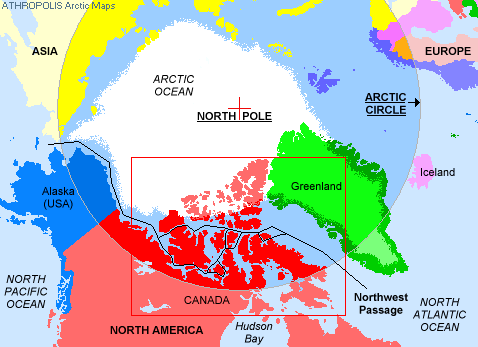What a busy week! I slowly rolled into our Northern Environments class Tuesday just in time to miss the presentations, and more importantly, to miss the Starburst prize at the end of the last presentation. I came in well rested and excited for Thursday's class, and got to learn about Inuit Clothing, Dog Sledding, and Arctic Sports. One of the most important themes I learnt from the combined presentations is patience in Northern Environments.
 |
| http://www.mccord-museum.qc.ca/ scripts/imagedownload.php ?accessNumber=M976.148&Lang=1& imageID=269025 |
Our first presentation went through all the different parts of an Inuits traditional wardrobe from their mukluks to the inuinnaq. After listing through all the different articles of clothing, it really portrayed a sense of quality and their persistence to producing these beautiful works of art. For the inuinnaq, or their dancing cap, Autumn told us how it contained a band of loon skin that would give the person who wore it a sense of the loons speed and vision. The amount of detail put into all the articles of clothing really showed patience from the Inuit women who would construct these, and from the men who would hunt for the skins.
To learn more about Inuit clothing, check out the McCord Museum's article on Inuit clothing and construction at;
http://www.mccord-museum.qc.ca/scripts/explore.php?Lang=1&tableid=11&tablename=theme&elementid=70__true&contentlong. (The article comes with some very reliable sources!)
Our next presentation seemed to fit a little better with the weeks topic of sports and games. We talked about Dog Sledding. One of the more interesting facts I learnt about dog sleds, is the amount of patience that comes into play when the elements are not always agreeing with a dog sledder. We learnt that safety comes first for the dogs, and that running in thick, soft snow or on hard cold ice can do damage to a dog. To continue a travel through soft snow, the dog sled driver will trek ahead of the pack with snow shoes, and help compact the ground to make it safe for the dogs. This would make going a short distance take a lot of patience for the team.
 |
| http://www.westcanadatours.com/dogsled_tours/dogsled_7.html |
Competitive dog sledding is a sport seen most popularly in the arctic regions of Canada, USA, Russia and some of Europe. I found a race in Cannington Ontario with a 10,000 $ prize to the fastest team. They also expanded it into a festival, showcasing traditional Metis culture, ice sculptures, and live music. I was also happy to see that they have the dogs safety as a priority and cancelled the race this year due to poor trails. Have a look at the Cannington Dog Sled Race website at http://www.canningtondogsledraces.com/index.html
To end things off for the day, we had Mario show us a very entertaining introduction into Arctic Sports. After seeing a video of two young men attempting to endure the pain of ripping each others ear off all I could think of is that these people had way too much time on their hands to come up with these games. I mentioned patience a couple times already and what did you expect the Inuit to do while being so patient creating their own clothing, or wasting some time between a snow storm with their dog pack - They play their own sports! I found a website describing the 11 events in Yellowknife's 2008 Arctic Winter Sports competition. Check them all out here, http://www.awg2008.org/sports/arctic-sports.asp
Would you want to participate in these Arctic Winter Games ?
Check out the website for the Arctic Winter Games here at http://www.arcticwintergames.org/














